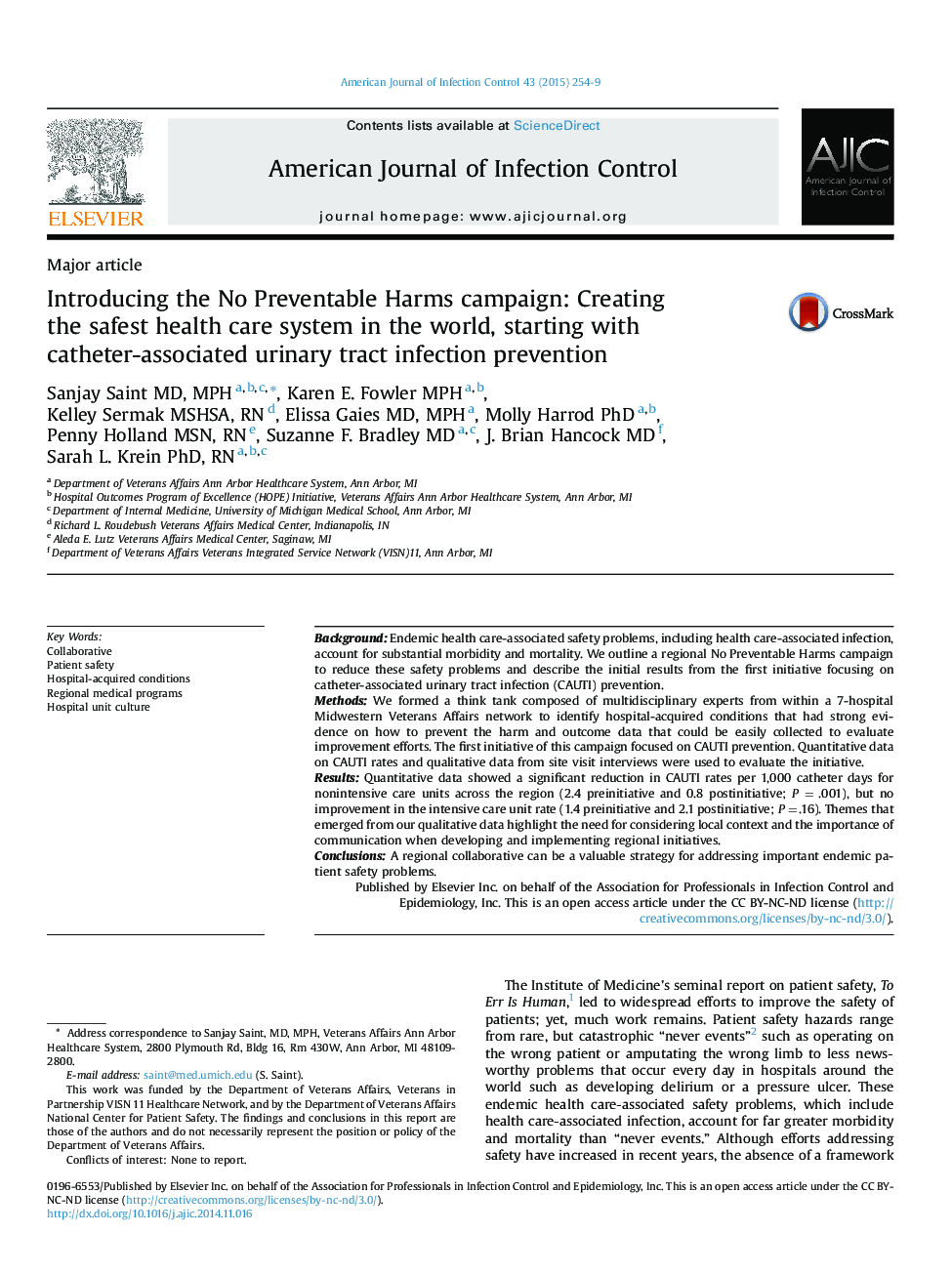| کد مقاله | کد نشریه | سال انتشار | مقاله انگلیسی | نسخه تمام متن |
|---|---|---|---|---|
| 5867272 | 1563475 | 2015 | 6 صفحه PDF | دانلود رایگان |
- We describe a regional campaign to reduce hospital-acquired conditions.
- Catheter-associated urinary tract infection (CAUTI) prevention was the first focus.
- CAUTI rates significantly declined in nonintensive care units after the initiative.
- Qualitative evaluation provided several themes for improving regional initiatives.
- A regional collaborative appears to be a useful strategy for reducing patient harms.
BackgroundEndemic health care-associated safety problems, including health care-associated infection, account for substantial morbidity and mortality. We outline a regional No Preventable Harms campaign to reduce these safety problems and describe the initial results from the first initiative focusing on catheter-associated urinary tract infection (CAUTI) prevention.MethodsWe formed a think tank composed of multidisciplinary experts from within a 7-hospital Midwestern Veterans Affairs network to identify hospital-acquired conditions that had strong evidence on how to prevent the harm and outcome data that could be easily collected to evaluate improvement efforts. The first initiative of this campaign focused on CAUTI prevention. Quantitative data on CAUTI rates and qualitative data from site visit interviews were used to evaluate the initiative.ResultsQuantitative data showed a significant reduction in CAUTI rates per 1,000 catheter days for nonintensive care units across the region (2.4 preinitiative and 0.8 postinitiative; PÂ =Â .001), but no improvement in the intensive care unit rate (1.4 preinitiative and 2.1 postinitiative; PÂ =Â .16). Themes that emerged from our qualitative data highlight the need for considering local context and the importance of communication when developing and implementing regional initiatives.ConclusionsA regional collaborative can be a valuable strategy for addressing important endemic patient safety problems.
Journal: American Journal of Infection Control - Volume 43, Issue 3, 1 March 2015, Pages 254-259
